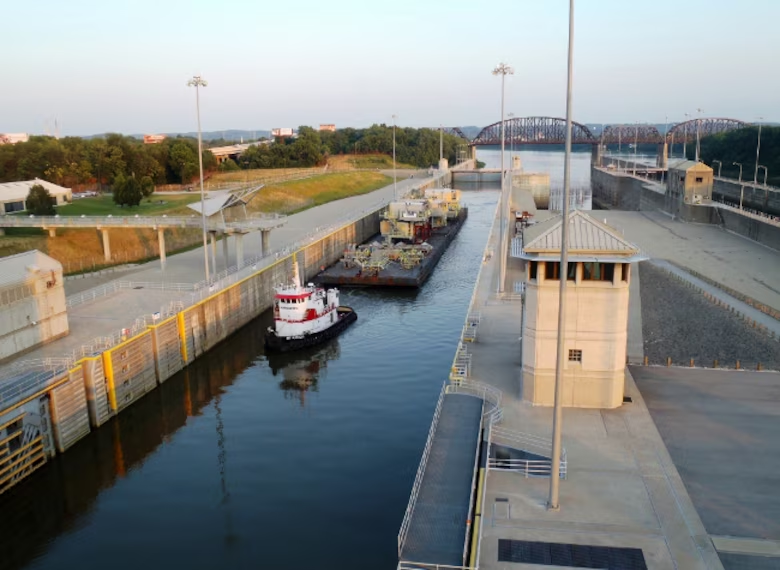
McAlpine Locks Dam Repair Project

Industry
USACE
Challenge
During a top surface slab repair at the McAlpine Locks dam in Louisville, Kentucky, MAC Construction worked with Ernst Concrete to optimize long-distance concrete placement over a 400-foot line pump. To maintain consistent placeability, pumpability, and finishability under these demanding conditions, E5® Internal Cure® was incorporated into the mix design.
Results
This internal curing technology provided enhanced mix stability and slump retention, ensuring smooth delivery and finish despite the extended pumping distance. Additionally, E5® eliminated the need for post-pour curing, streamlining field operations and supporting long-term durability in this critical infrastructure application.
Key Products
E5® Internal Cure

About USACE
The U.S. Army Corps of Engineers (USACE) is a federal agency under the Department of Defense that provides engineering, construction, and infrastructure services. Founded in 1802, it supports both military and civil projects—building bases, managing waterways, reducing flood risks, and restoring ecosystems. With a workforce of mostly civilians, USACE operates globally and plays a key role in disaster response and public infrastructure development across the U.S.
Project Overview
MAC Construction preformed a slab repair to the top surface of a dam at the McAlpine Locks in Louisville, Kentucky in the fall of 2022. The concrete had to be line pumped 400 feet to the finish location. To ensure placeability, pumpability and finishability, Ernst Concrete recommended E5® Internal Cure®. E5® Internal Cure® enhanced the mix and slump control, while removing post pour curing.
How E5 Elevated Performance
E5® Nano Silica has emerged as a dynamic solution, addressing challenges of concrete across all concrete applications and all segments of the construction industry. E5® Nano Silica is able to seamlessly adapt to the specific demands of various concrete applications, playing a pivotal role in meeting diverse industry needs, including accelerated construction schedules, concrete material consistency and workability, increased quality and durability of concrete structures, moisture control, surface abrasion resistance and floor flatness, as well as carbon reduction.

